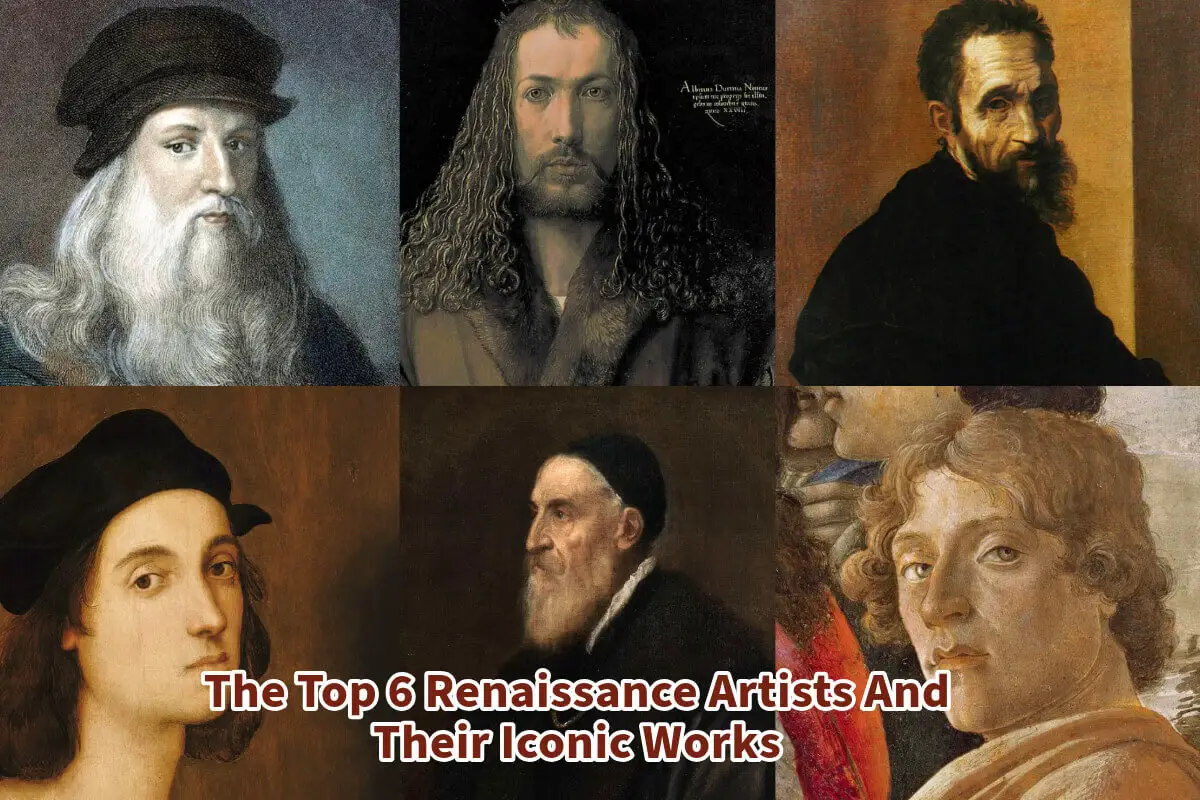The Renaissance was a period of profound cultural, artistic, and intellectual revival in Europe, roughly from the 14th to the 17th century. It departed from the Middle Ages, characterized by an embrace of classical learning, humanism, and a renewed focus on individual achievement.
Among the many who contributed to this era, six artists stand out for their extraordinary contributions. Read on as we explore the lives, works, and enduring legacies of these top Renaissance artists: Leonardo da Vinci, Michelangelo, Raphael, Titian, Sandro Botticelli, and Albrecht Dürer. We will delve into their backgrounds, highlight three of their most important works, and discuss why they are considered the pinnacle of Renaissance artistry.
Table of Contents
- Leonardo da Vinci
- Michelangelo Buonarroti
- Raphael Sanzio
- Titian (Tiziano Vecellio)
- Sandro Botticelli
- Albrecht Dürer
- Related Questions
Leonardo da Vinci
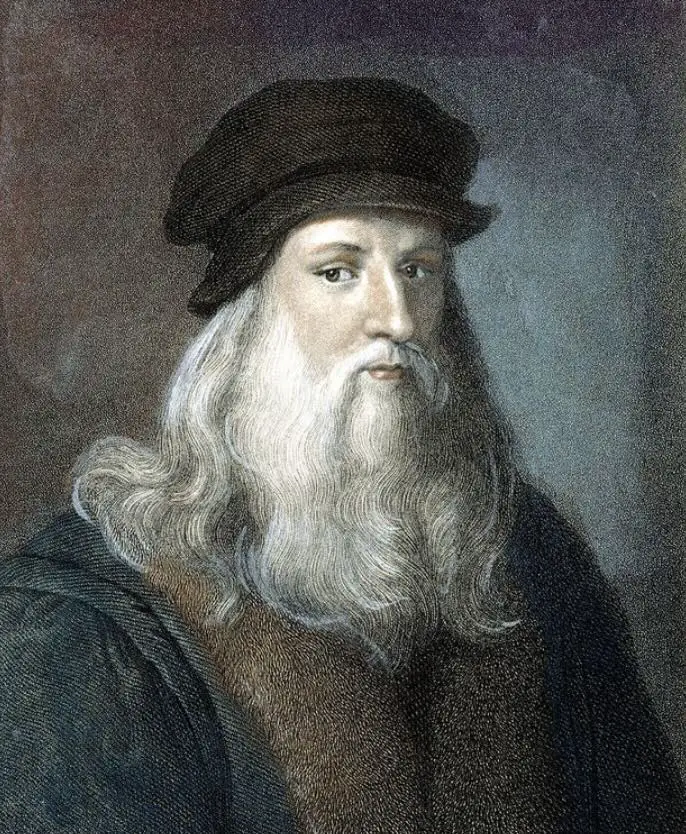
Leonardo da Vinci (1452-1519) was an Italian polymath whose expertise spanned various fields, including painting, sculpture, architecture, science, engineering, anatomy, and more. Born in Vinci, Italy, Leonardo received his early training in Florence under the artist Andrea del Verrocchio.
His inquisitive mind and keen observation skills led him to create works as scientifically precise as they were artistically beautiful.
Important Works by Leonardo
Mona Lisa (1503-1506)
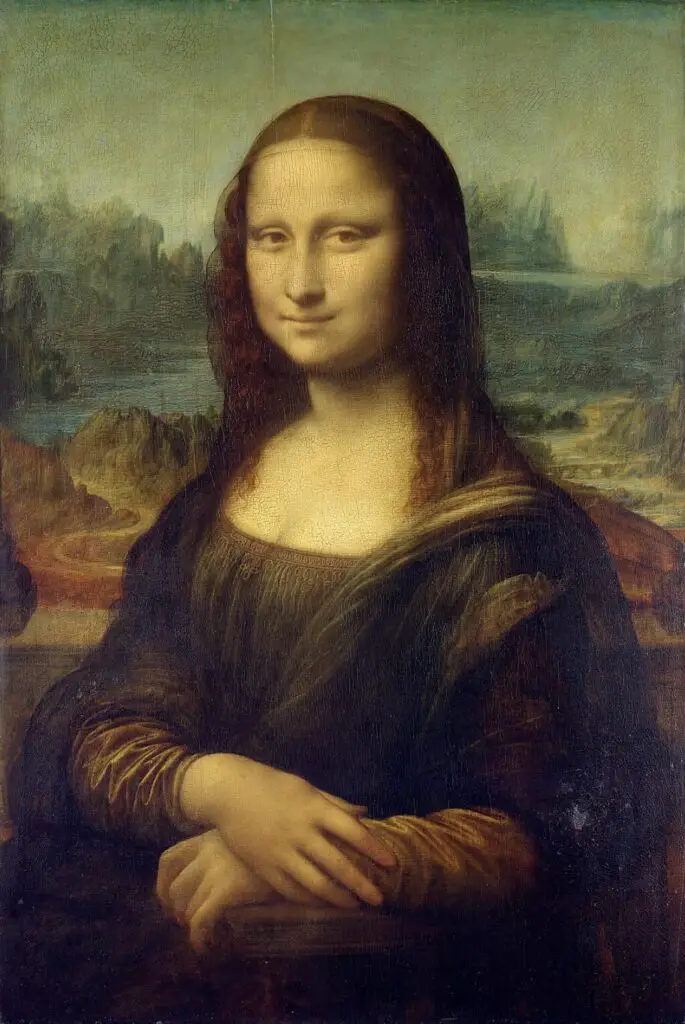
- Significance: The Mona Lisa is perhaps the most famous painting in the world, celebrated for its enigmatic expression and intricate use of sfumato, a technique that creates a soft transition between colors. The portrait’s lifelike representation and psychological depth make it a masterpiece of portrait art.
The Last Supper (1495-1498)
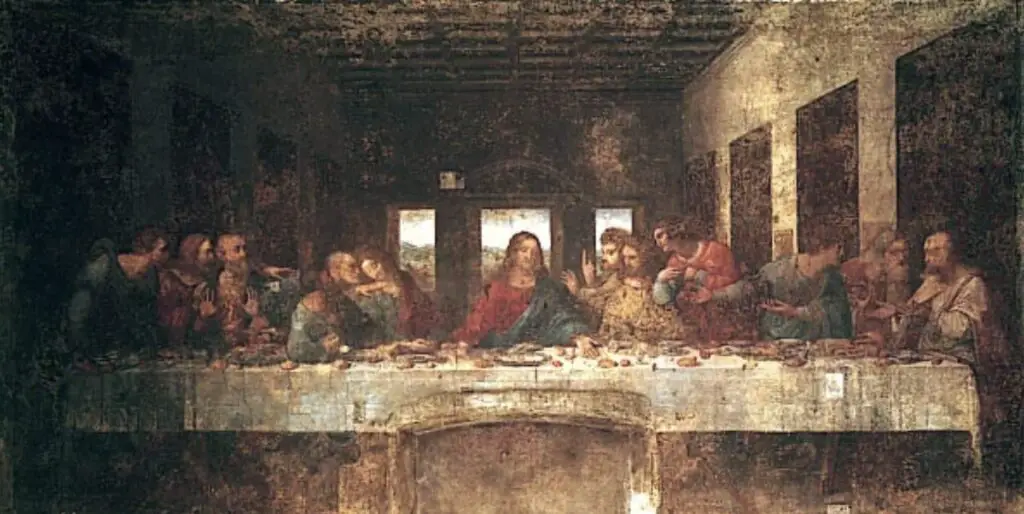
- Significance: This iconic fresco captures the moment Jesus announces that one of his disciples will betray him. Leonardo’s perspective and arrangement of the figures create a dramatic, emotionally charged scene. The work is a masterclass in composition and narrative expression.
Vitruvian Man (c. 1490)
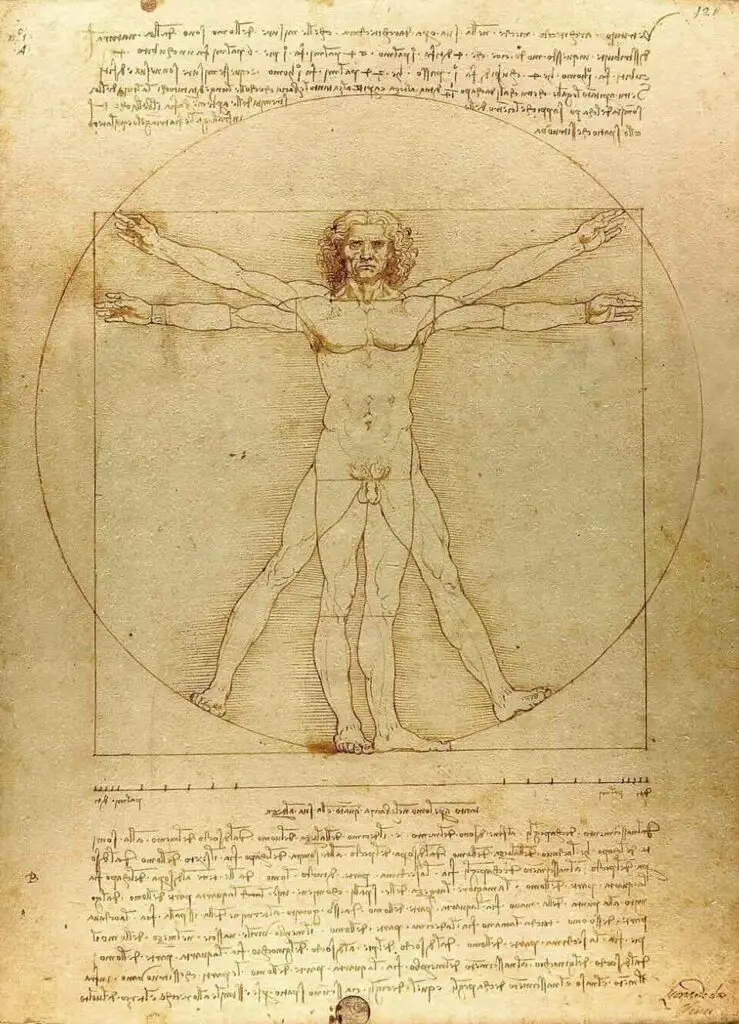
- Significance: This drawing, accompanied by notes, illustrates Leonardo’s understanding of proportion and anatomy. It symbolizes the blend of art and science during the Renaissance, highlighting the harmony between human beings and the universe.
Why Leonardo Made It to the Top
Leonardo’s unparalleled curiosity and intellectual versatility set him apart. His meticulous studies of nature and anatomy and innovative artistic techniques made him a pioneer of Renaissance art.
His ability to capture the complexity of human emotion and his contributions to science and technology cement his legacy as one of the greatest artists ever.
Michelangelo Buonarroti
Michelangelo Buonarroti (1475-1564) was an Italian sculptor, painter, architect, and poet. Born in Caprese, Michelangelo showed an early aptitude for art and became an apprentice in the workshop of Domenico Ghirlandaio.
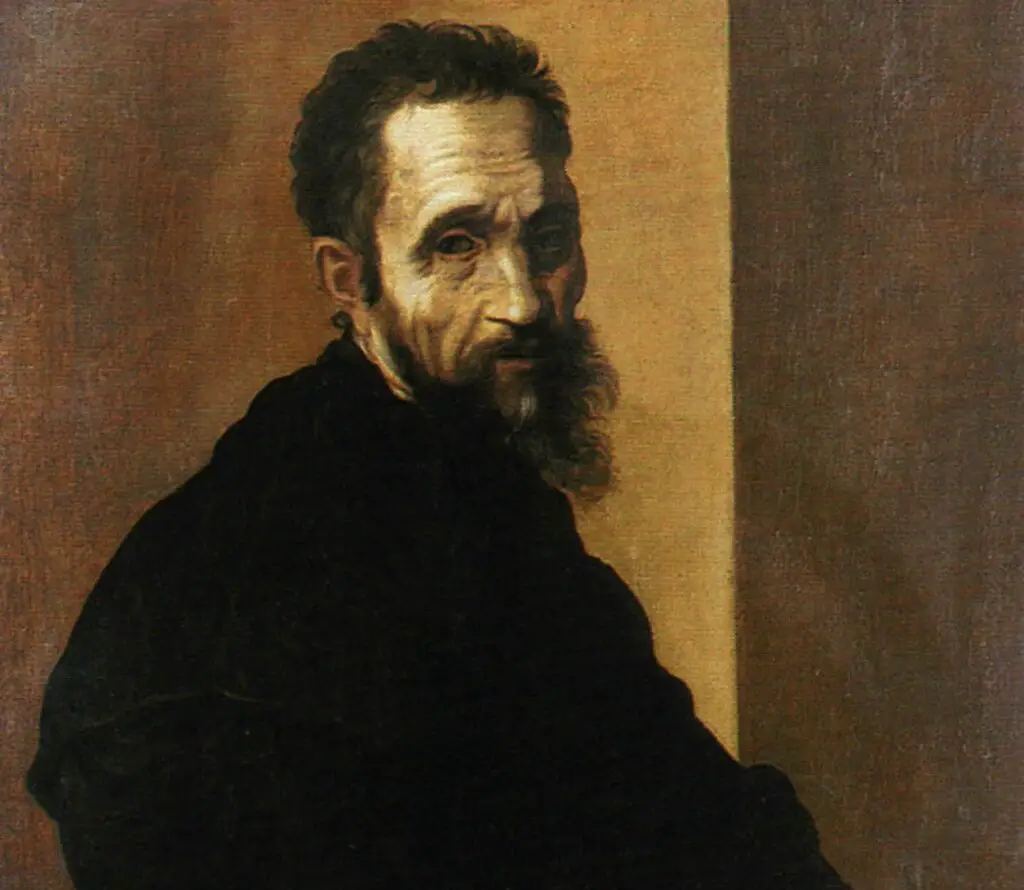
He quickly established himself as a master sculptor and painter, earning commissions from the most influential patrons of his time, including the Medici family and the Vatican.
Important Works By Michelangelo
David (1501-1504)

- Significance: This marble statue represents the biblical hero David and is renowned for its detailed anatomy and expression of strength and beauty. Standing over 17 feet tall, David epitomizes the Renaissance ideal of the human form.
Sistine Chapel Ceiling (1508-1512)

- Significance: The ceiling of the Sistine Chapel features an intricate series of frescoes depicting scenes from the Bible, including the iconic Creation of Adam. Michelangelo’s dynamic compositions and masterful use of human anatomy make this work a cornerstone of Renaissance art.
The Last Judgment (1536-1541)

- Significance: Painted on the altar wall of the Sistine Chapel, this fresco depicts Christ’s second coming and the final judgment of souls. The composition is filled with influential, dramatic figures, showcasing Michelangelo’s skill in conveying complex narratives and emotions.
Why Michelangelo Made It to the Top
Michelangelo’s mastery of sculpture and painting and his ability to depict the human body with unparalleled realism and emotional intensity set him apart from his contemporaries.
His works display technical excellence and convey profound philosophical and theological ideas, making him a central figure of the Renaissance.
Raphael Sanzio
Raphael Sanzio (1483-1520), known simply as Raphael, was an Italian painter and architect. Born in Urbino, Raphael trained under the Umbrian master Pietro Perugino.

He later moved to Florence, where he absorbed the influence of Leonardo da Vinci and Michelangelo. Raphael is celebrated for his graceful compositions and mastery of perspective.
Important Works By Raphael
The School of Athens (1509-1511

- Significance: This fresco in the Vatican’s Apostolic Palace depicts an assembly of great philosophers and scientists of antiquity. The composition exemplifies Renaissance ideals of harmony, balance, and the use of perspective.
The Sistine Madonna (1512)
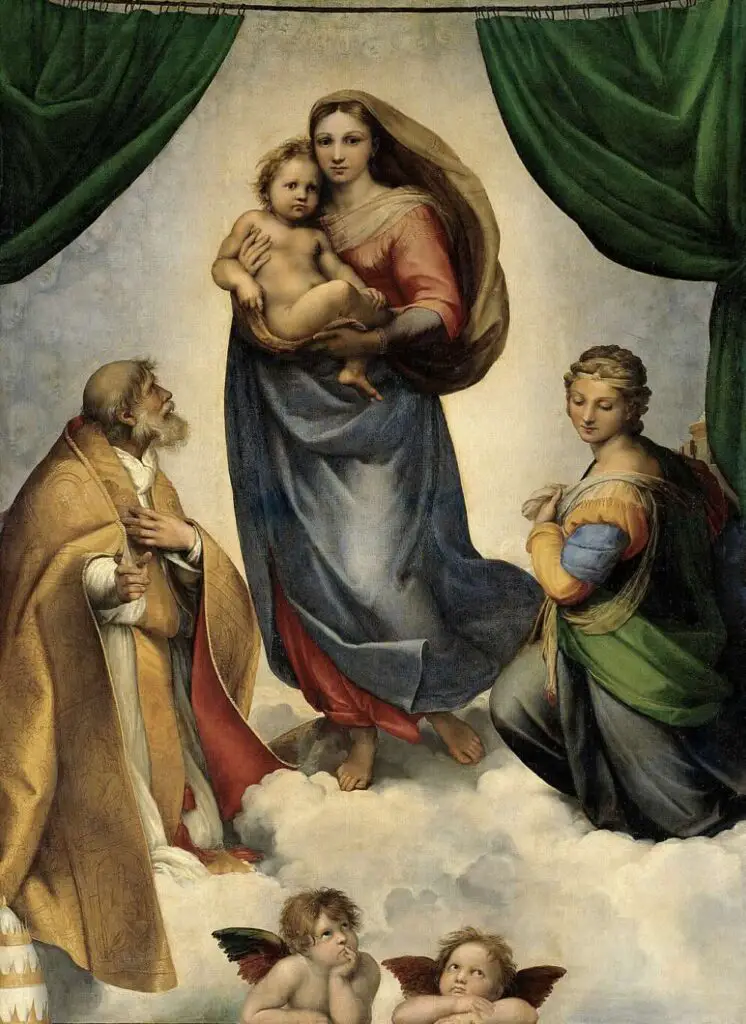
- Significance: This painting is renowned for its serene depiction of the Virgin Mary holding the Christ Child, accompanied by saints. The image of the two cherubs at the bottom has become one of the most famous in art history.
The Transfiguration (1516-1520)

- Significance: Raphael’s last and perhaps most significant work portrays the biblical event of Christ’s transfiguration. The composition brilliantly contrasts Christ’s divine nature with the human struggle below, showcasing Raphael’s narrative skill and mastery of light and shadow.
Why Raphael Made It to the Top
Raphael’s works are celebrated for their clarity of form, ease of composition, and visual achievement of the Neoplatonic ideal of human grandeur. His ability to synthesize the influences of his contemporaries into a harmonious and accessible style made him one of the most admired artists of the Renaissance.
Titian (Tiziano Vecellio)
Titian (c. 1488-1576) was an Italian painter and the most essential member of the 16th-century Venetian school.

Born in Pieve di Cadore, Titian trained under Giovanni Bellini and worked closely with Giorgione. He became the leading painter in Venice, known for using color and innovative compositions.
Important Works By Titian
Assumption of the Virgin (1516-1518)
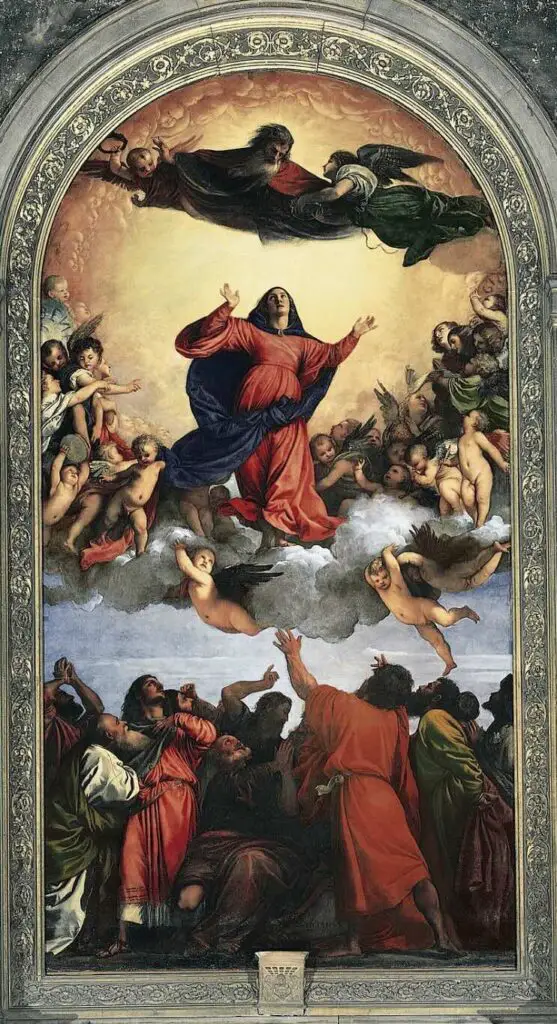
- Significance: This large altarpiece is a landmark in Venetian painting. It is known for its vibrant colors and dynamic composition, which marked a significant departure from the more static compositions of the time.
Bacchus and Ariadne (1520-1523)
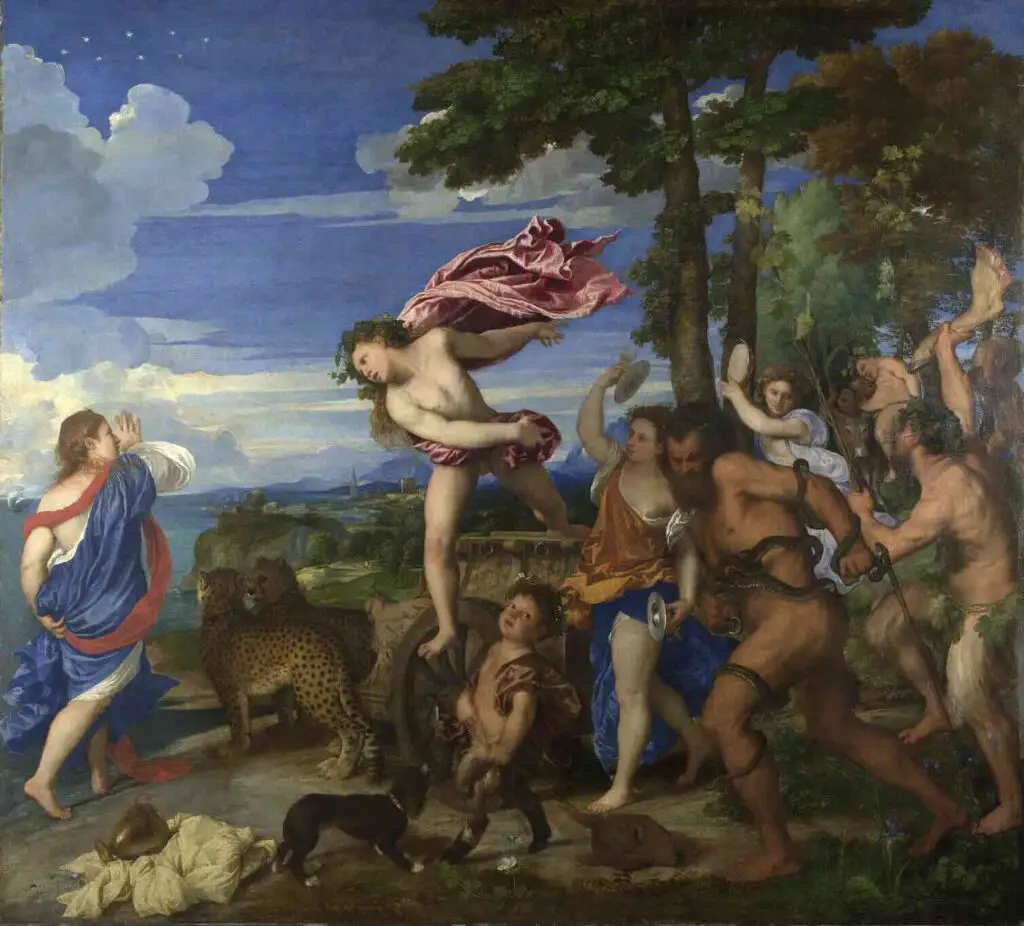
- Significance: This mythological painting is celebrated for its vivid color palette and the portrayal of Bacchus mid-leap. It exemplifies Titian’s skill in depicting motion and emotion.
Venus of Urbino (1538)

- Significance: This painting of a reclining nude woman is renowned for its sensuality and use of color. It has influenced countless artists and remains a masterpiece of Renaissance art.
Why Titian Made It To the Top
Titian’s mastery of color, use of dynamic compositions, and ability to convey emotion through his brushwork made him a pivotal figure in the Renaissance. His work shaped the Venetian school and influenced the broader course of Western art.
Sandro Botticelli
Sandro Botticelli (1445-1510), born Alessandro di Mariano di Vanni Filipepi, was an Italian painter of the Early Renaissance.
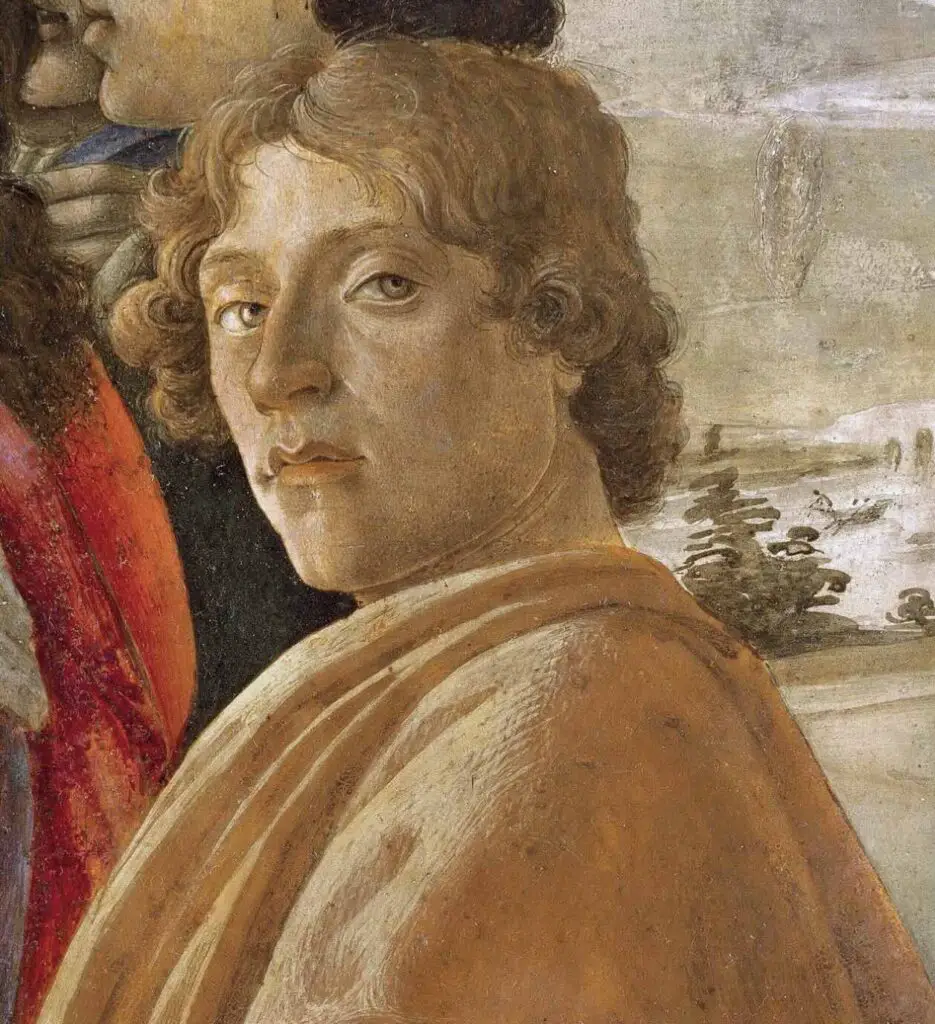
Botticelli was born in Florence and trained under Fra Filippo Lippi. His work is characterized by its linear grace and the ethereal beauty of its figures.
Important Works By Botticelli
The Birth of Venus (c. 1485-1486)

- Significance: This iconic painting depicts Venus emerging from the sea on a shell. It is celebrated for its beauty and representation of Neoplatonic ideals of divine love and beauty.
Primavera (c. 1482)
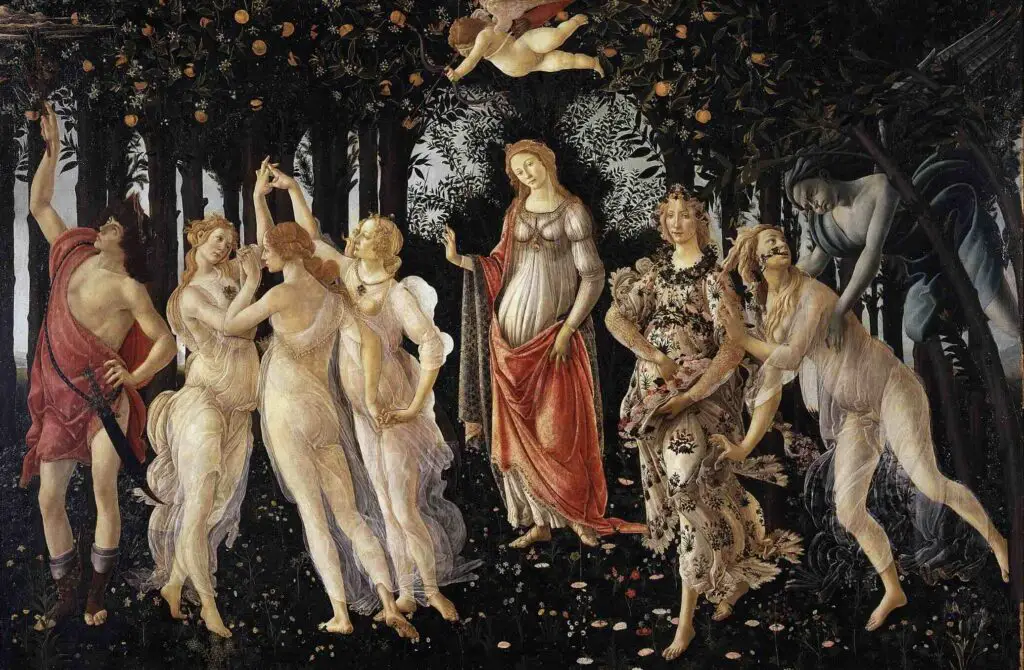
- Significance: Also known as “Allegory of Spring,” this work features a complex composition filled with mythological figures. It is admired for its intricate symbolism and the elegance of its figures.
The Adoration of the Magi (c. 1475)
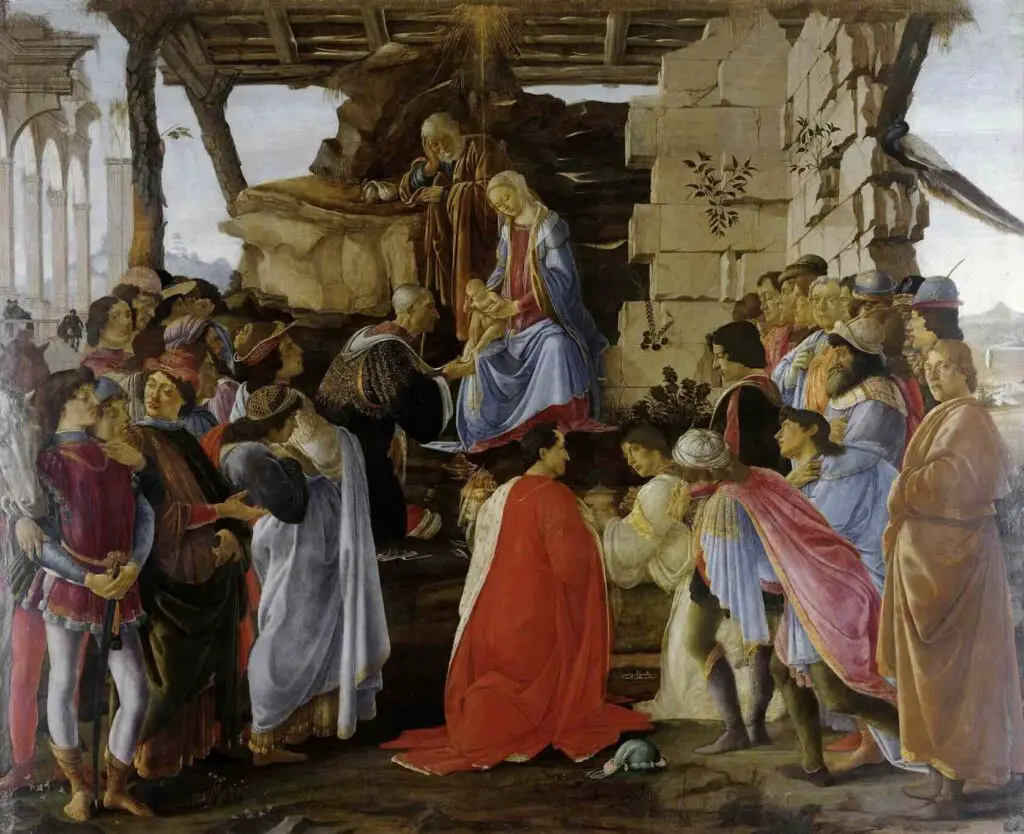
- Significance: This painting is notable for its detailed depiction of the Magi and the rich color palette. It includes portraits of the Medici family, reflecting Botticelli’s connections with his patrons.
Why Botticelli Made It to the Top
Botticelli’s work embodies the Early Renaissance’s idealized beauty and graceful linearity. His paintings often explore mythological and religious themes with a distinctive poetic quality, making him one of the most beloved artists of his time.
Albrecht Dürer

Albrecht Dürer (1471-1528) was a German painter, printmaker, and theorist. Born in Nuremberg, he received early training from his father, a goldsmith, and later apprenticed with Michael Wolgemut. Dürer is renowned for his detailed engravings and woodcuts and his contributions to art theory.
Important Works By Durer
Melencolia I (1514)
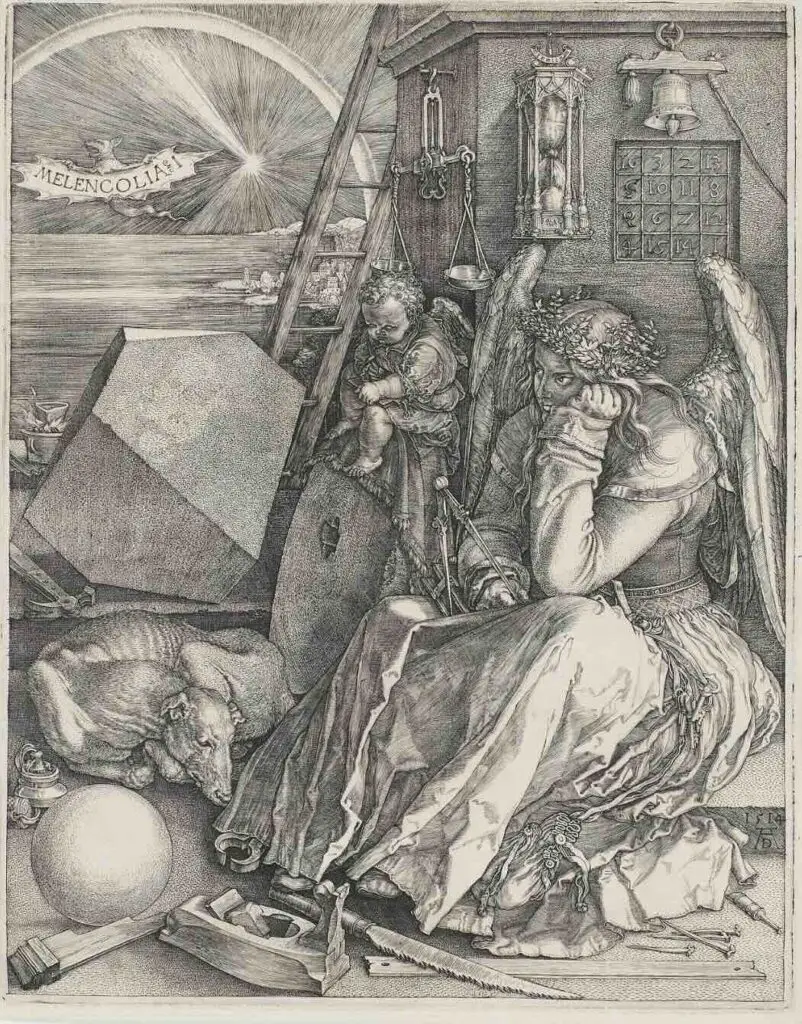
- Significance: This enigmatic engraving is one of Dürer’s most famous works. It is filled with symbolic imagery representing the intellectual and artistic challenges of the Renaissance.
The Knight, Death, and the Devil (1513)

- Significance: This engraving is a masterpiece of Dürer’s technical skill and deep philosophical insight. It depicts a knight riding through a dark forest, accompanied by personifications of Death and the Devil. The work is rich in symbolism and demonstrates Dürer’s mastery of line and texture.
The Four Apostles (1526)
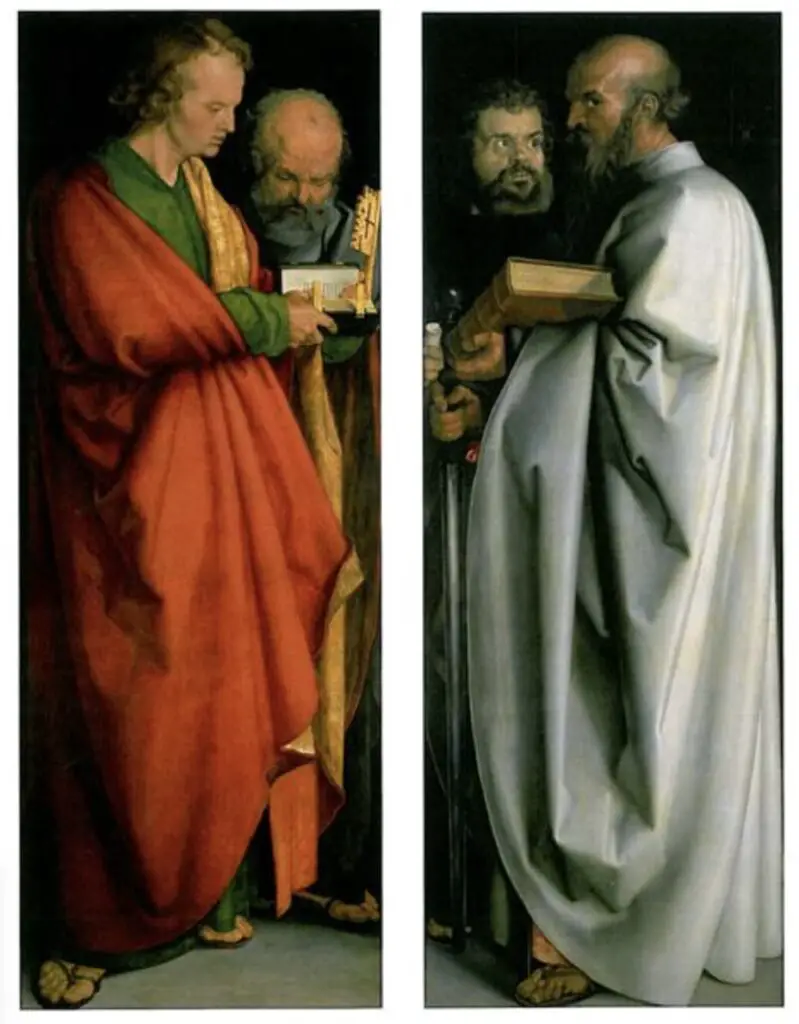
- Significance: This large panel painting portrays Saints John, Peter, Mark, and Paul, accompanied by inscriptions warning against false prophets. It is significant for its realistic portrayal of the figures and its exploration of religious themes, reflecting the artist’s humanist beliefs and the influence of the Reformation.
Why Durer Made It to the Top
Albrecht Dürer is celebrated for his exceptional skills in engraving and painting and his intellectual contributions to art theory. His precise and detailed works combined northern European naturalism with the ideals of the Italian Renaissance.
Dürer’s engravings, in particular, had a widespread influence, as they were easily reproduced and disseminated throughout Europe, making him one of the most influential artists of the Northern Renaissance.
These six artists—Leonardo da Vinci, Michelangelo, Raphael, Titian, Sandro Botticelli, and Albrecht Dürer—represent the pinnacle of Renaissance artistry. Each brought unique skills and perspectives to their work, contributing to unprecedented cultural and artistic flourishing.
Leonardo da Vinci is remembered for his scientific approach to art and mastery of human expression. Michelangelo combined his exceptional talents in sculpture and painting to explore the physical and spiritual aspects of the human condition.
Raphael was a master of composition and harmony, creating works that balanced beauty and narrative depth. Titian revolutionized the use of color and was a pivotal figure in Venetian painting.
Sandro Botticelli infused his work with a lyrical and poetic quality that captured the beauty of mythological and religious themes. Lastly, Albrecht Dürer blended northern European detail with Renaissance ideals, becoming a key figure in disseminating Renaissance ideas across Europe.
Each artist left a lasting legacy, influencing generations of artists and shaping the course of Western art. Their works continue to be studied, admired, and celebrated, embodying the ideals and achievements of the Renaissance—a period that forever changed the course of art history.
Listen To Our Podcast About
Who Are the Top 6 Renaissance Artists and Their Iconic Works? Below or By clicking here.
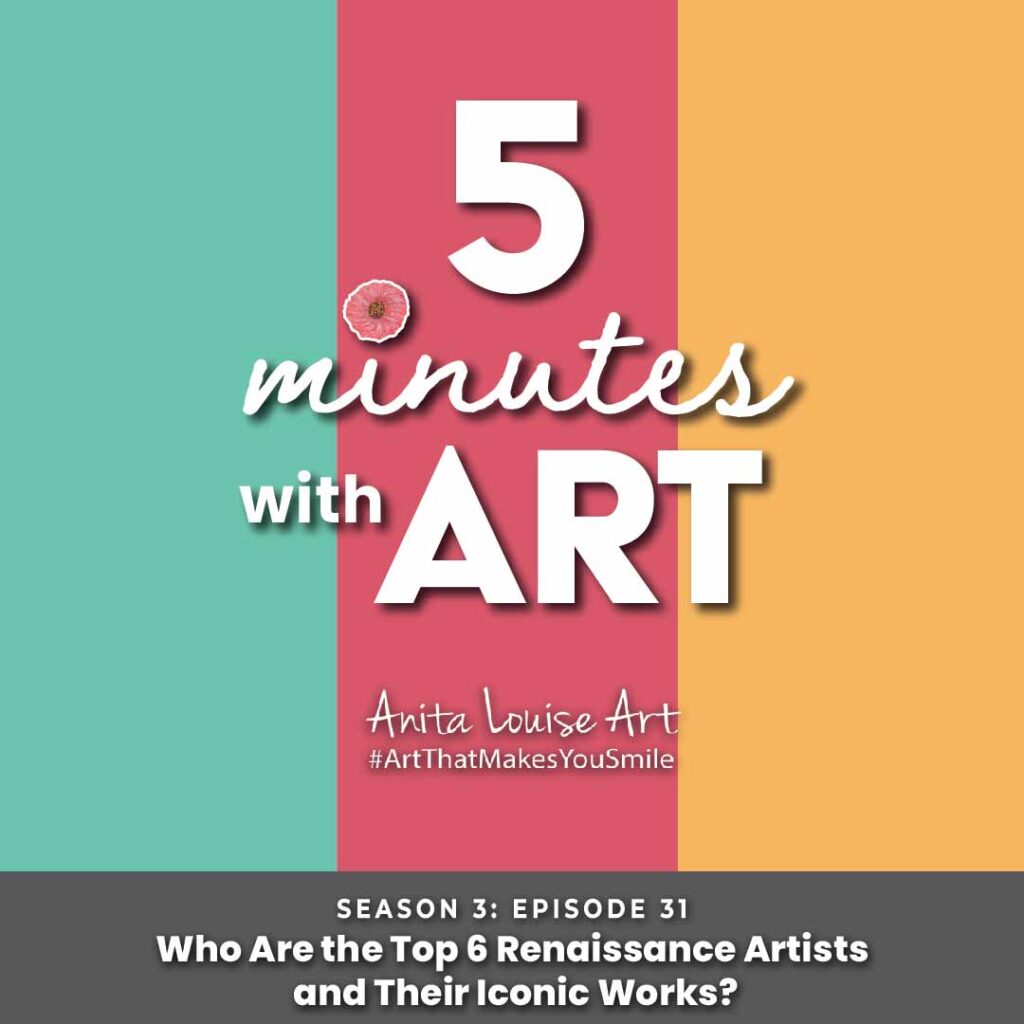
Anita Louise Art is dedicated to art education, great artists, and inspiring others to find and create their art. We love art that uplifts and inspires. #ArtToMakeYouSmile! #ArtToMakeYouHappy!
If you are interested to see any of my art, you can find out more by clicking here. If you are interested in what inspires me and my paintings, you can discover more by clicking here.
We have a free newsletter and would love you to be part of our community; you can subscribe to the newsletter by clicking here. If you have any questions, I would be happy to talk to you anytime. You can reach me, Anita, by clicking here.
Subscribe to our Anita Louise Art YouTube Channel filled with great videos and information by clicking here.
Related Questions
What Are The Characteristics Of Mannerism Art?
Mannerism was an art movement filled with elongated bodies, tiny heads, and human figures in twisted forms. Perspective and proportion were unnecessary, but colors, contrasts, virtuosity, and agitated compositions were essential.
By clicking here, you can learn more by reading What Are The Characteristics Of Mannerism Art?
11 Interesting Facts About Traditional Hawaiian Art
Hawaiian art is divided into three main periods: pre-European art, Nonnative Hawaiian Art, and Hawaiian Art With Western Influences. After Captain Cook arrived in Hawaii in 1773, traditional Hawaiian art changed as Western culture influenced Hawaiian art. The Volcano School of Art was developed in Hawaii in the late 1800s when the artist’s work became impacted by the live volcanic eruptions in Hawaii.
By clicking here, you can learn more by reading 11 Interesting Facts About Traditional Hawaiian Art.
5 Ways Spending Time In Nature Helps Artistic Inspiration
Spending time in nature can help your artistic inspiration in 5 different ways 1) getting us out of the studio to see something new, 2) doing as the en Plein air painters and seeing art in a new light, 3) boosting our creativity, 4) helping us unblock an artistic block, and 5) clearing our minds so we can be more creative.
By clicking here, you can learn more by reading 5 Ways Spending Time In Nature Helps Artistic Inspiration.

